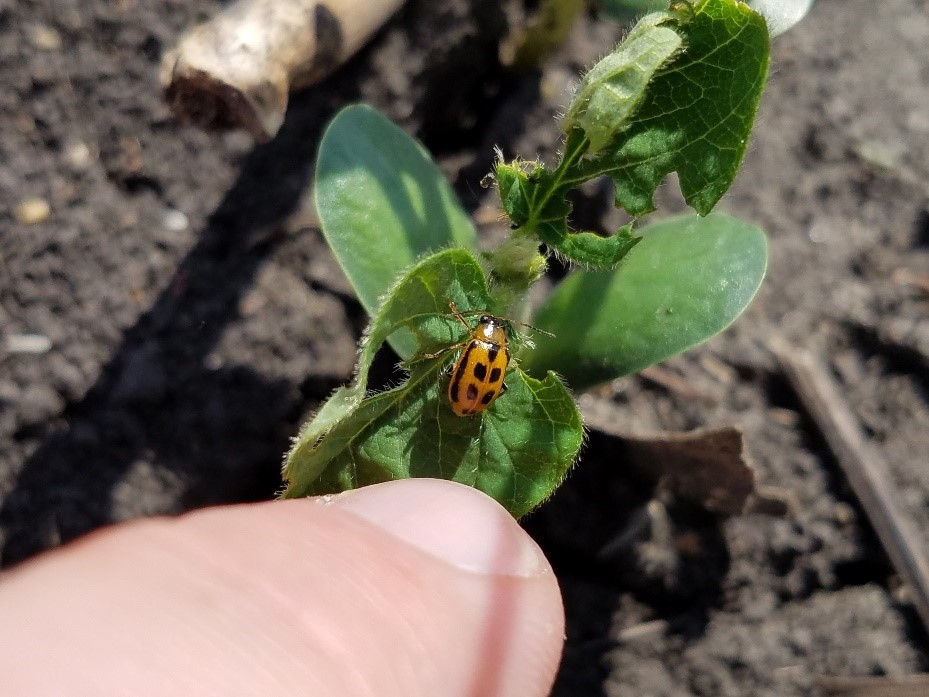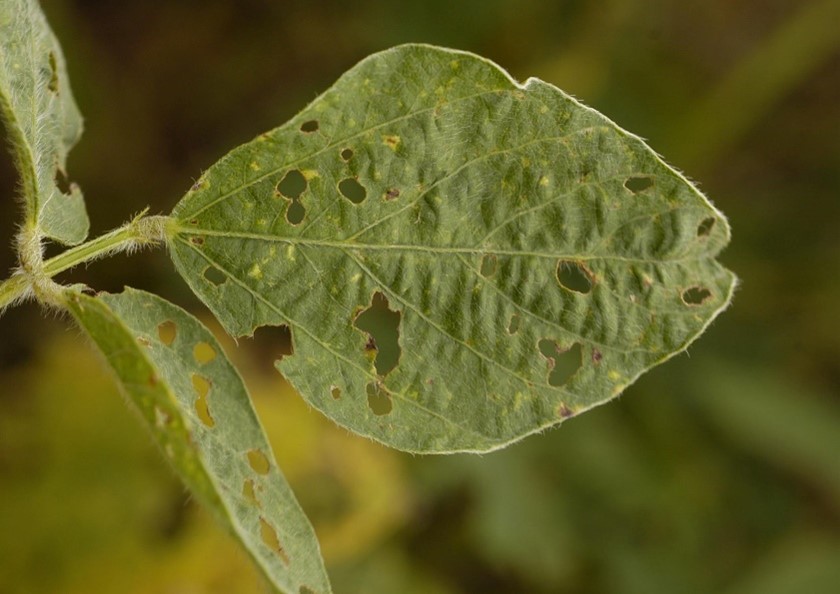 Figure 1. Adult Bean leaf beetle. Image: N Seiter UIUC
Figure 1. Adult Bean leaf beetle. Image: N Seiter UIUC
- Bean leaf beetles overwinter as adults and commonly emerge with soybean seedlings.
- Adults have the potential to feed on cotyledons and foliage of highly susceptible soybean seedlings, as well as transmit a soybean virus.
- Insecticide seed treatments can effectively mitigate bean leaf beetle populations. Additionally, scouting and over-the-top applications of insecticides may be necessary if threshold levels of the pest are detected.
After a mild winter, inquiries often arise regarding its impact on insect pests. One recurring question this season has been, “What effect will this winter have on insect populations?” Though the answer is nuanced, we possess significant knowledge regarding how winter conditions influence the bean leaf beetle (BLB). Let's delve into BLB fundamentals, field risk assessment, and available treatment options.
Bean Leaf Beetle Basics
Adult beetles measure approximately 1/4” in length and may exhibit black markings of various sizes and quantities on their forewings (elytra). While there are numerous color variations among BLBs, all feature a black triangle at the neck region, with black heads being characteristic of all BLB specimens. During the winter, adult beetles overwinter in woodlots and soybean fields, reemerging in spring to feed on host plants. Severe winter temperatures can significantly impact overwintering survival rates. Throughout the season, adults mate, and females lay eggs at the base of plants. Larvae primarily feed below ground on soybean nodules, with this activity not shown to affect yield. Adult emergence occurs within 4-6 weeks, contingent upon temperature variations. In many parts of the midwest, BLBs undergo two generations annually, leading to distinct peaks in adult activity: the emergence of overwintered adults at the start of the growing season (April-May), the emergence of the first generation (typically in July), and the emergence of the second/overwintering generation (typically in August). Overwintered beetles typically feed on soybean foliage for about three weeks. Early-emerging soybean fields often harbor a concentrated population of overwintered beetles, resulting in heightened densities and noticeable feeding injury. However, as additional fields emerge, beetle dispersion occurs, leading to reduced densities in later-planted soybeans. BLBs can transmit bean pod mottle virus (BPMV) by coming into contact with infected host plants. Early transmission during vegetative development can result in yield loss. Late-season pod feeding by second-generation adults can facilitate moisture and pathogen entry, thereby reducing yield and quality, representing the greatest yield impact in many areas.
Scouting
Begin scouting for BLB as soon as seedlings emerge, particularly in areas where adult presence was notable at the previous season's end. Early-season scouting is straightforward, as beetles are conspicuous on seedlings, allowing for easy damage assessment. Scout at least five locations spanning 20 row-ft across the field, noting the average beetle count per plant and observed defoliation levels. Identify areas where damage may necessitate replanting. The economic threshold for soybean defoliation before bloom is an average removal of 30% of leaf tissue with beetles still present in the field. Although uncommon, foliar insecticide application may be warranted if economic thresholds are met at a specific soybean growth stage. However, the primary concern with early-season BLB infestations is their potential to vector BPMV, which is challenging to quantify. For initial BLB control, consider an insecticide seed treatment, particularly if historical yield losses from BPMV are evident. While BLBs cause various injuries to soybeans, economic losses due to their damage occur sporadically in most areas.

Figure 2. Symptoms of bean leaf beetle feeding on a soybean leaf. Note the round damage within the leaf characteristic of this pest.